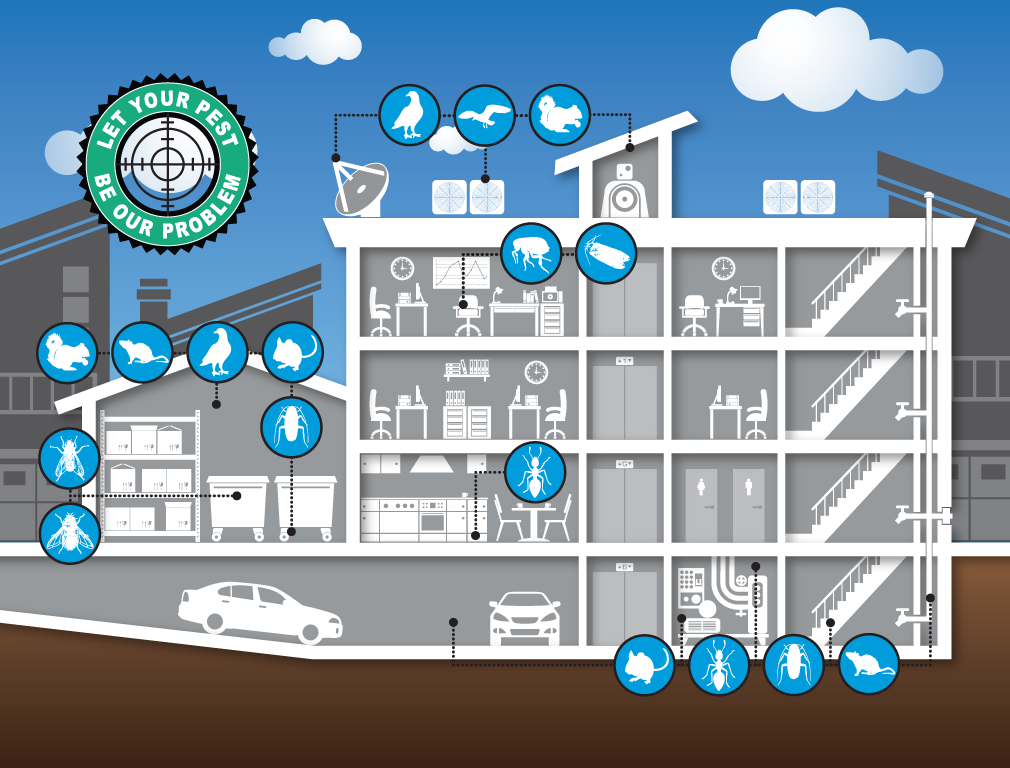Rodent-Proofing Your Attic: Necessary Tips For Homeowners
Rodent-Proofing Your Attic: Necessary Tips For Homeowners
Blog Article
Write-Up Author-Webster Enevoldsen
Imagine your attic room as a cozy Airbnb for rats, with insulation as fluffy as resort cushions and wiring extra tempting than area solution. Currently, imagine lawn bug control tossing a wild party in your home while you're away. As a house owner, ensuring your attic is rodent-proof is not just about assurance; it has to do with securing your residential or commercial property and loved ones. So, what simple steps can you require to safeguard your sanctuary from these hairy intruders?
Check for Entrance Things
To start rodent-proofing your attic room, inspect for access factors. Begin by thoroughly analyzing the outside of your home, searching for any type of openings that rats can make use of to get to your attic. Look for spaces around energy lines, vents, and pipelines, in addition to any fractures or holes in the structure or siding. See to it to pay close attention to areas where different building materials satisfy, as these prevail entry points for rats.
Additionally, evaluate the roof for any type of damaged or missing out on tiles, as well as any gaps around the sides where rodents might press via. Inside the attic, search for signs of existing rodent activity such as droppings, chewed cables, or nesting materials. Utilize web link to extensively inspect dark edges and concealed rooms.
Seal Cracks and Gaps
Check your attic room thoroughly for any type of fractures and voids that require to be sealed to stop rats from going into. Rodents can press via even the smallest openings, so it's important to seal any kind of prospective entrance points. Examine around pipelines, vents, cable televisions, and where the walls satisfy the roofing system. Utilize a mix of steel wool and caulking to seal off these openings properly. Steel woollen is an exceptional deterrent as rats can not eat through it. Make sure that all gaps are tightly sealed to reject access to unwanted pests.
Don't forget the relevance of sealing gaps around doors and windows as well. Usage weather condition stripping or door sweeps to seal these locations efficiently. Inspect the locations where utility lines enter the attic room and seal them off making use of an appropriate sealant. By putting in the time to secure all fractures and gaps in your attic, you produce a barrier that rats will locate hard to violation. Avoidance is key in rodent-proofing your attic room, so be extensive in your initiatives to seal off any type of prospective entrance factors.
Eliminate Food Sources
Take positive measures to eliminate or store all potential food resources in your attic room to hinder rats from infesting the area. Rodents are attracted to food, so eliminating their food sources is important in maintaining them out of your attic room.
Right here's what you can do:
1. ** Shop food safely **: Prevent leaving any kind of food items in the attic. Shop all food in airtight containers constructed from steel or durable plastic to prevent rats from accessing them.
2. ** Tidy up particles **: Eliminate any type of piles of debris, such as old papers, cardboard boxes, or timber scraps, that rodents might make use of as nesting material or food resources. Maintain the attic clutter-free to make it much less attractive to rodents.
3. ** Dispose of rubbish correctly **: If you use your attic room for storage and have waste or waste up there, make certain to take care of it frequently and properly. Rotting trash bin draw in rats, so maintain the attic clean and free of any type of natural waste.
Verdict
Finally, keep in mind that an ounce of prevention is worth an extra pound of treatment when it involves rodent-proofing your attic.
By making the effort to examine for entry points, seal fractures and voids, and remove food sources, you can keep unwanted insects away.
Keep in best way to get rid of mosquitoes in yard , 'An ounce of avoidance deserves a pound of cure' - Benjamin Franklin.
Stay termite pest control services and safeguard your home from rodent invasions.
